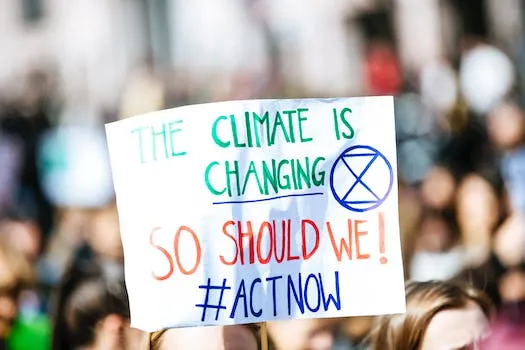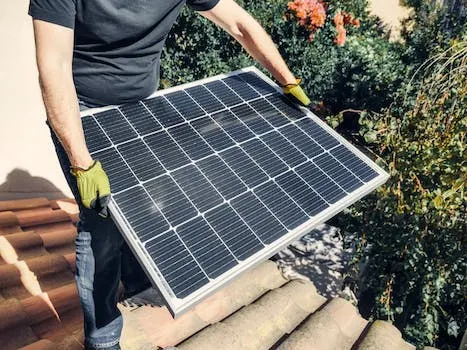
The Environmental Benefits of Investing in Carbon Offset Credits
As the effects of climate change become increasingly apparent, more and more people are looking for ways to reduce their carbon footprints and make a positive impact on the environment. One way to do this is by investing in carbon offset credits, which allow individuals and businesses to reduce their emissions while supporting sustainability initiatives. Carbon offset programs enable individuals, companies, and governments to purchase offsets that invest in renewable energies, energy efficiency projects, reforestation efforts, and other initiatives that help mitigate climate change.
The potential of carbon offsets to combat climate change is immense; they can protect nature while also routing money towards areas of the planet most affected by global warming. As more businesses pledge to offset their CO₂ footprint, there has been an increasing debate about the efficiency of these initiatives. The voluntary carbon market is gaining momentum as it plays an increasingly important role in limiting global warming. Carbon credits provide consumers with a way to pay for their emissions sins through investment opportunities in voluntary or compulsory markets.
Investing in carbon offset credits offers numerous environmental benefits; it helps reduce greenhouse gas emissions while also supporting sustainability projects around the world. By investing in these types of programs you can make a difference when it comes to protecting our planet from further damage caused by climate change. With so many options available for reducing your own personal or business’s environmental impact through investing in carbon offsets – now is the time act!
What Are Carbon Offset Credits?
Carbon offset credits, also known as carbon offsets, are a type of financial instrument used to reduce carbon dioxide emissions. They are derived from activities that reduce, capture, or avoid greenhouse gas emissions such as renewable energy projects, reforestation efforts and energy efficiency initiatives. Carbon offset credits are then sold to businesses and individuals who want to reduce their carbon footprints. Carbon offsetting is any reduction of greenhouse gas (GHG) emissions to make up for emissions that occur elsewhere. A carbon offset broadly refers to a reduction in GHG emissions – or an increase in carbon storage (e.g., through land restoration or the planting of trees) – made in order to compensate for emissions made elsewhere.
Carbon credits are measurable, verifiable emission reductions from certified climate action projects which reduce, remove or avoid greenhouse gas (GHG) production and can be bought by businesses and individuals who want to lower their own environmental impact. The main feature of this platform is the display of UNFCCC-certified climate friendly projects that reduce, avoid or remove greenhouse gas emissions from the atmosphere by buying these tradable “rights” or certificates linked to activities that lower the amount of CO2 in the atmosphere.
The purchase of these offsets helps fund clean energy initiatives such as wind farms and solar power plants which help replace fossil fuels with renewable sources while also providing economic benefits for local communities where they are located. Additionally, investing in these offsets can help companies meet sustainability goals while reducing their overall environmental impact on a global scale by helping them reach net zero status faster than if they were relying solely on internal measures alone.
Overall investing in carbon offset credits provides numerous environmental benefits including reducing GHG production levels globally while also providing economic incentives for local communities where clean energy initiatives take place; all while helping companies reach net zero status faster than if they were relying solely on internal measures alone
The Benefits of Investing in Carbon Offset Credits
Investing in carbon offset credits has numerous benefits for both the environment and those who purchase them. Carbon offsetting helps environmental projects that may not be able to secure funding on their own, while also providing additional benefits such as biodiversity protection, pollution prevention, public-health improvements, and job creation. Energy efficiency offsets are typically the most cost-effective way to reduce carbon emissions, making them a key part in fighting climate change. Carbon credits are a commodity that can be valued and traded; they also serve as an indicator of rates of investment in climate and nature. Companies and individuals can account for their unavoidable emissions by buying carbon credits from certified activities that support community development, renewable energy projects, reforestation initiatives, or other sustainable practices. By investing in these types of projects through carbon offset credits, individuals can help reduce their own environmental impact while supporting important initiatives around the world.
Reduced Carbon Footprint
Investing in carbon offset credits is a great way to reduce your carbon footprint without having to make changes to your lifestyle. Carbon offsets are a process by which funds are directed towards projects that help reduce global emissions. These projects can include reducing emissions from coal, oil, and natural gas, as well as other activities such as reforestation and renewable energy production. Companies or individuals can purchase Carbon credits which represent the amount of greenhouse gases they have emitted. The money from these purchases should be used to fund projects that will help reduce global emissions and combat climate change.
Carbon credits also have an important dual role in the fight against climate change; they enable companies to meet their net zero targets by neutralizing a large chunk of their emissions through buying offsets. Companies get a set number of credits which decline over time, meaning they must continually invest in new ones if they want to remain compliant with regulations and maintain their net zero status. By investing in carbon offset credits, companies can demonstrate their commitment to sustainability while helping protect the environment for future generations.
Support for Sustainable Initiatives
Investing in carbon offset credits is an important step in the fight against climate change. These credits are used to fund projects that reduce emissions, such as renewable energy projects, reforestation efforts and energy efficiency initiatives. By investing in these credits, you are helping to ensure that these projects receive the necessary funding they need to succeed. Carbon offset credits cost between $3-$5 per ton and the proceeds from their sale enable the development of carbon-reduction projects across a wide array of project types. These projects can help reduce emissions, lift communities out of poverty and help us transition to a net zero economy. To meet ambitious net zero targets and limit global warming to 1.5C in line with the Paris Agreement, we need to cut current greenhouse-gas-emission levels by half by 2030 - making investments into carbon offset credits even more important for our future sustainability goals.
Cost Savings
Investing in carbon offset credits is a great way to save money in the long run. By Reducing your emissions, you can avoid the costs associated with pollution and other environmental damage. Additionally, many carbon offset credit projects can be structured as investments, allowing you to earn a return on your money. Carbon credits are permits that allow holders to emit a limited amount of carbon dioxide or other greenhouse gases into the atmosphere.
Rather than simply reducing emissions, investing in carbon offsets allows individuals and companies to invest in environmental projects around the world that reduce, remove or avoid greenhouse gas (GHG) emissions altogether. This trading of carbon credits helps companies reduce their GHG emissions from coal, oil and natural gas consumption while also reducing their overall carbon footprint. The measurable and verifiable emission reductions from certified climate action projects make it easier for companies to track their progress towards sustainability goals while also providing them with financial incentives for doing so.
In addition to helping protect our environment from further damage due to climate change, investing in carbon offsets can provide cost savings over time by avoiding costly fines associated with pollution as well as earning returns on investments made through these projects. Investing in these types of initiatives is an effective way for businesses and individuals alike to contribute towards global sustainability efforts while also reaping financial rewards at the same time.
Conclusion
In conclusion, investing in carbon offset credits is a great way to reduce your carbon footprint and make a positive impact on the environment. Not only does it reduce your emissions, but it also helps to support sustainable initiatives and can even save you money in the long run. Carbon credits are permits that allow the owner to emit a certain amount of carbon dioxide or other greenhouse gases. Carbon offsetting is a process by which funds are directed to projects that help reduce global emissions. Companies or people often buy carbon credits from certified activities that support community development, allowing them to account for their unavoidable emissions. Reducing, eliminating and reversing GHG emissions is an effective approach when it comes to reducing emissions; however, awareness is key as well - once you know what your footprint is you will be able to take appropriate action accordingly. Investing in carbon offset credits provides an opportunity for individuals and companies alike to make a difference while also saving money in the long run - making it an ideal choice for those looking for ways they can contribute positively towards environmental protection efforts worldwide.










